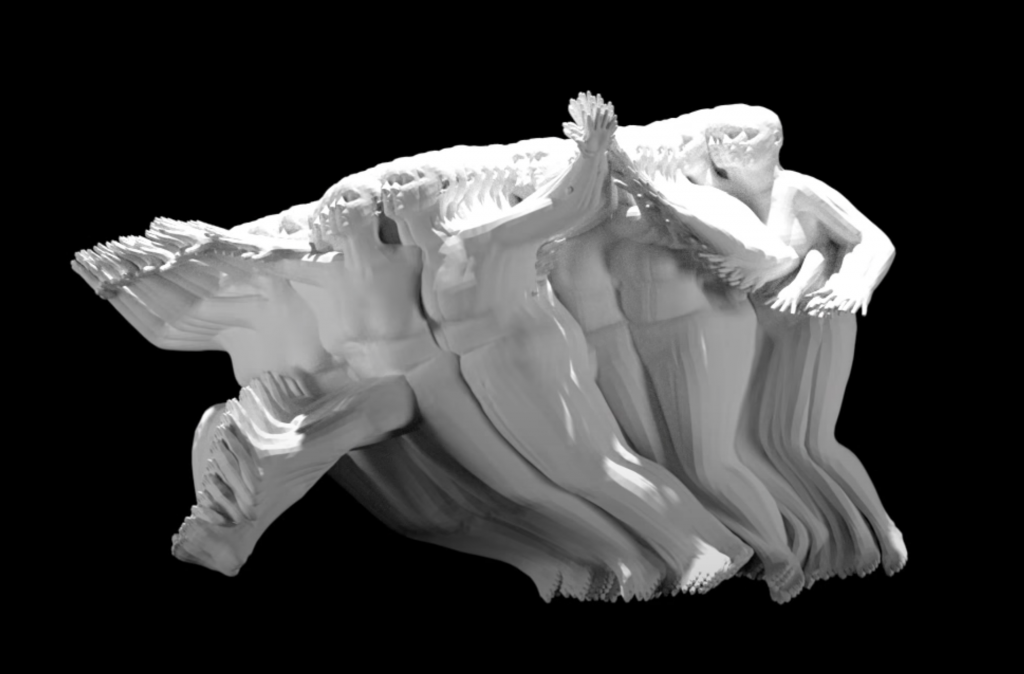In exploring computational digital fabrication, I began my search with a simple Google of “algorithm based physical sculptures.” I came across one link that talked about MoSculp, an algorithmic system created out of the Computer Science and Artificial Intelligence Laboratory (CSAIL) at Massachusetts Institute of Technology (MIT) in 2018.

Mosculp is a computer system that, when fed a 2D video of human movement, can create a 3D-printed sculpture conveying the arcs and curves created through the body’s movements. This is possible through the algorithm’s ability to estimate and detect key points of human body movements that transform the video of 2D frames into a 3D-aware rendering of the (human) subject’s 3D geometry.
The pieces created by MoSculp now may simply seem like abstract sculptures without much purpose, but the potential of the technology is clear. Researchers have noted the possible implications of technology like MoSculp; can this improve the ability for athletes and dancers (amongst other careers) to find a new way to micro-analyze the nuances of techniques by studying these motion-capture images? How about using these sculptures as toys and tools for physical rehabilitation?
I found this project to be interesting as it begins an important discussion about the necessity of the visual arts and the ability for people to utilize these computer generated softwares to create real and effective solutions to everyday problems.
![[OLD FALL 2020] 15-104 • Introduction to Computing for Creative Practice](wp-content/uploads/2021/09/stop-banner.png)